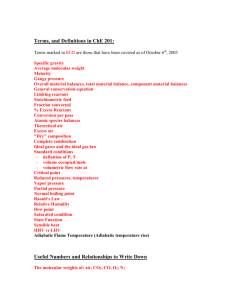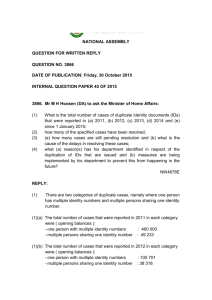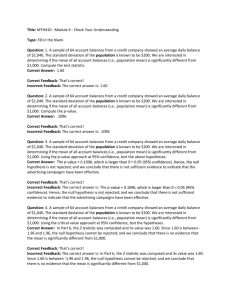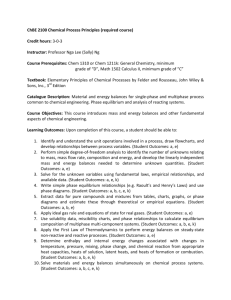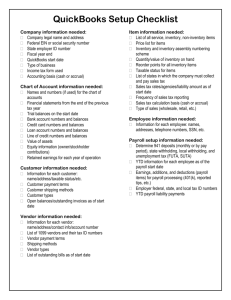Guidance on Managing Surplus School Balances
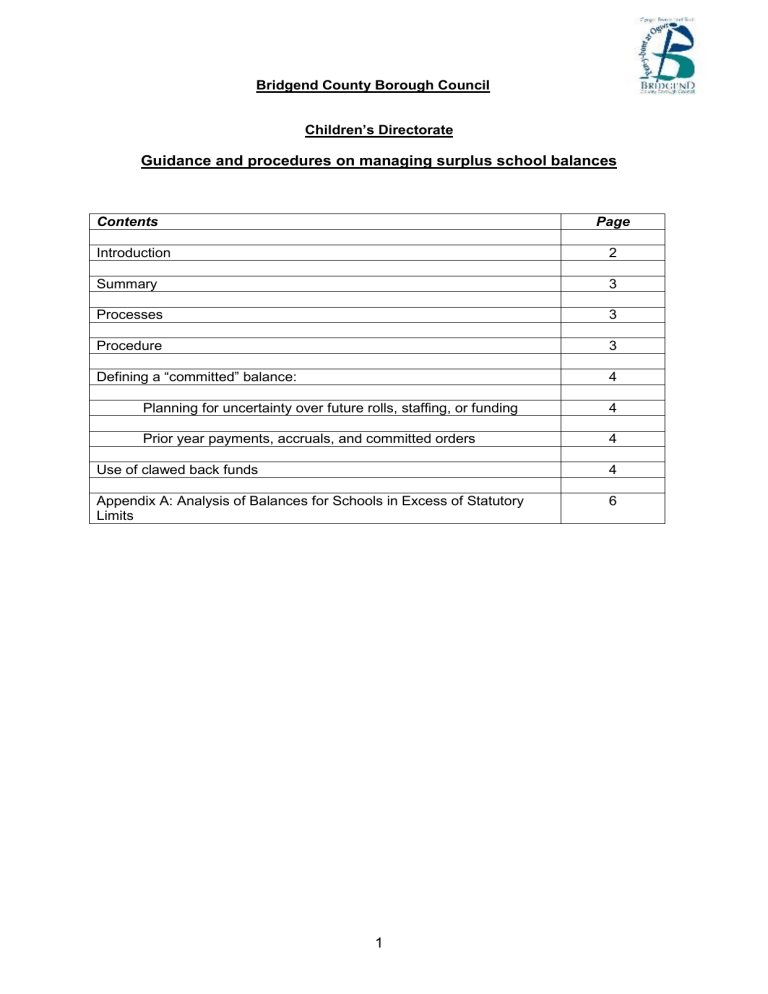
Bridgend County Borough Council
Children’s Directorate
Guidance and procedures on managing surplus school balances
Contents
Introduction
Summary
Processes
Procedure
Defining a “committed” balance:
Planning for uncertainty over future rolls, staffing, or funding
Prior year payments, accruals, and committed orders
Use of clawed back funds
Appendix A: Analysis of Balances for Schools in Excess of Statutory
Limits
Page
2
3
3
3
4
4
4
4
6
1
Introduction
In September 2010 the School Funding (Wales) Regulations 2010 came into force. The new regulations provide local authorities with new powers to direct spending or claw back monies where surplus budgets held by schools exceed £50k for primary and £100k for secondary and special schools. The Financial
Scheme for Schools currently states:
Schools will be required to complete a proforma at the end of each financial year, detailing how they intend to make use of their school balances over the coming financial year. The proforma will identify the following main areas: o o o o o o
General Contingency
Retrospective Adjustment
School Planned Initiatives
Demographic Change
Unexpected Income/Expenditure
Deficit
Following guidance from WAG, the scheme will be amended to include the following additional paragraphs:
… once the accounts are closed, schools with balances in excess of these amounts will be required to provide a more detailed breakdown of how they intend to use these balances. These surpluses will only be allowed to be carried forward with the approval of the Corporate Director Children and the Chief Finance Officer (or his or her representatives). Any surpluses not approved will be clawed back and returned to the overall Schools Budget for that financial year.
In agreeing the carry forward of balances, consideration will be given to any future projects for which funding is being retained, including the timescale, the current position of the school budget and any other factors including falling rolls and previous history in relation to balances. Guidance will available to support these decisions.
This guidance has been developed in discussion with the School Budget Forum and allows for a degree off flexibility.
The local authority recognises the need for schools to hold a contingency balance, and the level of this can vary according to the size of the school and its associated budget allocation. Whilst the local authority can only clawback funding above the statutory levels of £50,000 and £100,000, it will review the balances of all schools. It is considered that a general contingency of up to 4% for primary and nursery schools and 2% for secondary and special schools is sensible. It is part of sensible financial planning to hold an adequate contingency, but schools should be spending the great majority of their money on children in schools now, and the local authority will take strong action where schools have excessive surpluses except where they are very clearly and accurately justified. The local authority will continue to monitor balances and use its new powers to claw back excessive, uncommitted surplus balances.
2
Summary of Guidance
T he £50,000 and £100,000 thresholds are not targets, and schools with significant balances will be challenged on their whole balance. It is not the case that schools will only be required to justify surpluses over the thresholds.
The local authority has clearly defined what counts as a committed balance, but not restricted itself to it where tighter local definitions are more appropriate. All committed balances, whether they are for capital projects, for planned falling rolls or a fall in funding, for accruals or committed orders, should be based on sound planning and rigorous evidence. Ongoing costs should be funded on a sustainable basis and not from balances.
Clawed back funds will be directed to the Schools Budget overall and spent in the financial year in which they are clawed back. They could be spent on invest to save schemes such as supporting specific training initiatives or pump priming partnership arrangements, rather than simply being reallocated based on pupil numbers.
Processes
Schools with surpluses already above the threshold will be subject to ongoing monitoring to ensure that approved plans to spend their balances are delivered, or the excessive surplus is otherwise clawed back.
The Corporate Director – Children will have the final decision on whether to claw back funding from individual schools. As a minimum, the School Budget Forum will receive reports on schools where funding has been clawed back.
Procedure
Currently, at the end of the financial year all schools are required to complete a proforma analysing how they intend to use their balances. This process will continue.
However, for those sc hools that have balances in excess of £50,000 (primary and nursery schools) or £100,000 (secondary and special schools) a more detailed proforma (see Appendix A) will be sent which requires the school to break down their balance, setting out timescales, and providing evidence of the future spend.
Once these proformas are collated, discussions will be held between finance staff and other officers, including school development officers, and a decision will be made as to whether or not the proposals are acceptable. Further information may be required from schools to support their proposals. Schools should involve Governing bodies in this process.
Where proposals are accepted, schools will be monitored to ensure the plans are put into practice.
Where proposals are not accepted, the surplus funding will be clawed back and directed to the
Schools Budget overall, to benefit pupils in general.
NOTE: It is important to note that any balance over the two limits will not automatically mean clawback but could lead to clawback if there is inadequate justification and evidence for the surplus.
3
Defining a “committed” balance
Schools with an excess surplus balance must be able to justify their plans for their whole balance, not just the amount they are over the threshold, or they could be subject to clawback.
However, the local authority recognises the need for schools to hold a reasonable ongoing contingency balance.
Monies will only be classed as committed if the school can provide evidence to show that they o have been set aside for a specific purpose ; o will be spent within a defined timescale with a fixed end point; and o have been properly approved by governors.
All schools should be planning to spend the great majority of their money on children in schools now, rather than planning reasons to hold on to it. Committed sums should be planned for, and should not simply be used as an explanation for a large balance. Schools will need to provide evidence of planning, such as details of projects in the school’s Asset Management Plan or
School Development Plan, along with minutes of governors ’ meetings.
The local authority will monitor whether the school has subsequently implemented the agreed plans, and will be prepared to claw back funds if there are not good reasons for these failing to progress.
Planning for uncertainty over future rolls, staffing, or funding
Schools should provide calculations, plans, or projections to show expected changes in rolls or staffing.
If a school is projecting a fall in pupil numbers, then it needs to move towards a budget and staffing structure which is sustainable on a long-term basis. Surplus balances should not be used to defer difficult decisions, though it could be legitimate for a school to cushion a temporary dip in pupil numbers or to fund the part-year costs of not implementing staffing reductions until the autumn term.
It is prudent to keep some money aside for contingencies.
However, this amount should be reasonable, based on the size of the school and its history of balances.
Prior year payments, accruals, and committed orders
Where a school is awaiting charges for services or goods, it should be able to produce evidence such as copies of orders, quotes, delivery notes, or invoices. Reported accruals or commitments sh ould reconcile to what is recorded on the school’s financial system.
Use of clawed back funds
The regulations state that the Local Authority can use any funding clawed back to be:
“applied as part of their schools’ budget for the funding period in question”
Funding will normally be clawed back in the financial year following that in which the balance arose. Any funding clawed back will be re-invested in that same financial year.
The Local authority, in consultation with the School Budget Forum if the sum is significant, will ensure that any funds clawed back are spent productively so that local and national priorities either benefit directly or by reallocation of resources through supporting efficiency measures
4
elsewhere in the budget. Simply redistributing relatively small sums to all other schools will be of little benefit.
Clawed back funds may be used to fund invest-to-save priorities which can lead to greater efficiency savings and value for money in schools’ spending. Examples of invest to save schemes include:
Energy efficiency measures;
Supporting training initiatives;
Pump priming partnership arrangements;
Adaptations to schools enabling them to admit more pupils with special educational needs, avoiding expensive out of authority placements.
Any queries to:
Finance Manager, Children’s Directorate, Bridgend County Borough Council, Raven’s Court, CF31 4AP
5
SCHOOL SURPLUS BALANCES 2010/2011
ANALYSIS OF BALANCES FOR SCHOOLS IN EXCESS OF STATUTORY LIMITS
SCHOOL NAME:
BALANCE AS AT 31
ST
MARCH 2011: £
BALANCE AS % OF FORMULA ALLOCATION: %
Of the 2010/2011 TOTAL Surplus Balance, the amounts assigned for spend are:
Contingency £ %
Specific Purpose Amount
(£)
Year in which spend is to be incurred
Total Amount £
This proforma must be supported by “hard evidence”, such as an extract from Governing Body minutes, the school’s financial plan, the School Development Plan, a letter seeking quotations, detailed breakdown of pupil numbers, or copy of an order placed.
Signed: __________________________________________________ Date: __________________
(Headteacher)
Signed: __________________________________________________ Date: __________________
(Chair of Governors)
Please return to Deborah Exton, Finance Manager, Children’s Directorate, Sunnyside, by 30 th
May, 2011.
Note: Failure to provide the required information will result in automatic clawback of surplus balances.
6
7
